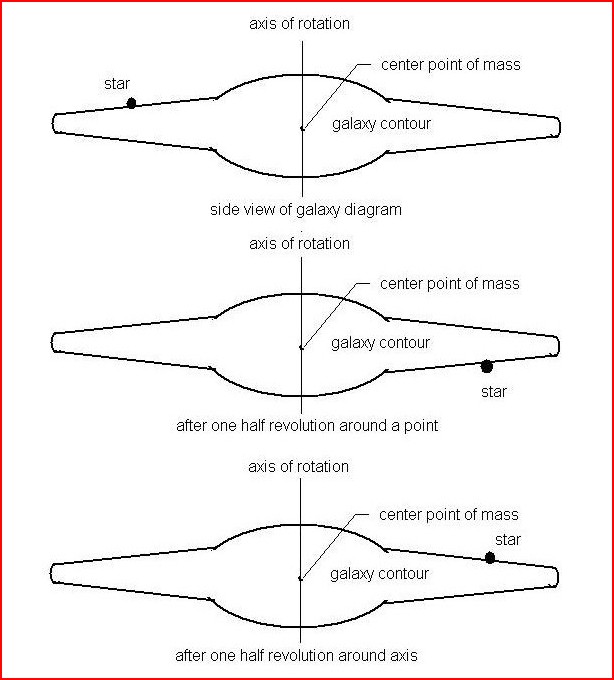
home •
about •
essential guide •
picture of the day •
thunderblogs •
news •
multimedia •
predictions •
products •
get involved •
contact

Credit: Michael Armstrong
pic of the day
archive
subject index
abstract
archive
Links:
Society for
Interdisciplinary
Studies
Aug 26, 2005
Galactic Rotation: Point or Axis?
Are galaxies collections of components (stars and clusters) that revolve around a center of mass, or are they semi-rigid structures that rotate as a whole around the axis?
Thinking the unthinkable? No, it’s just a simple paradigm change.
In the prevailing gravity-only cosmology each galactic component (stars and clusters) must revolve around the galactic center of mass—a point—unless one brings in special "posited" factors. Because galaxies are extended in three dimensions, unlike the Solar System with its planets orbiting in a plane, the orbital dynamics of stars and clusters revolving around a galactic center present a huge problem. Orbits will cross, perhaps collide, certainly become destabilized. Clusters would be disrupted. Spiral galactic arms are a special challenge: Observations indicate that their stars revolve at a too-constant speed, but revolution around a central point requires the speed to decrease more with distance.
Conventional astrophysicists have assumed the existence of “dark matter” and “dark energy” in just the amounts and locations necessary to solve these and other orbital dynamical problems. Because dark matter and dark energy can’t be detected, they are a “blank check” that conventional theorists can use to postpone the bankruptcy of a falsified theory.
In the Electric Universe, galaxies are not isolated island universes generating their energy from coalesced material via thermonuclear fusion reactions. They are systems of plasma-discharge components that are "driven" by intergalactic Birkeland currents. These systems rotate around an axis, much like a homopolar motor.
There are no crossing orbits or disruptions of clusters—except in the case of active galaxies undergoing an electrical “surge”, characterized by luminous “star-forming” regions and often polar jets ejecting quasars. There is no need for undetectable dark matter, dark energy, or black holes. Instead, the forms, dynamics, and evolutions of plasma galaxies can be produced and studied in laboratory setting.
Submitted by Michael Armstrong
EXECUTIVE EDITORS:
David Talbott, Wallace Thornhill
MANAGING EDITOR:
Mel Acheson
CONTRIBUTING EDITORS: Michael Armstrong, Dwardu Cardona, Ev Cochrane,
C.J. Ransom, Don Scott, Rens van der Sluijs, Ian Tresman
WEBMASTER: Michael Armstrong
Copyright 2005: thunderbolts.info